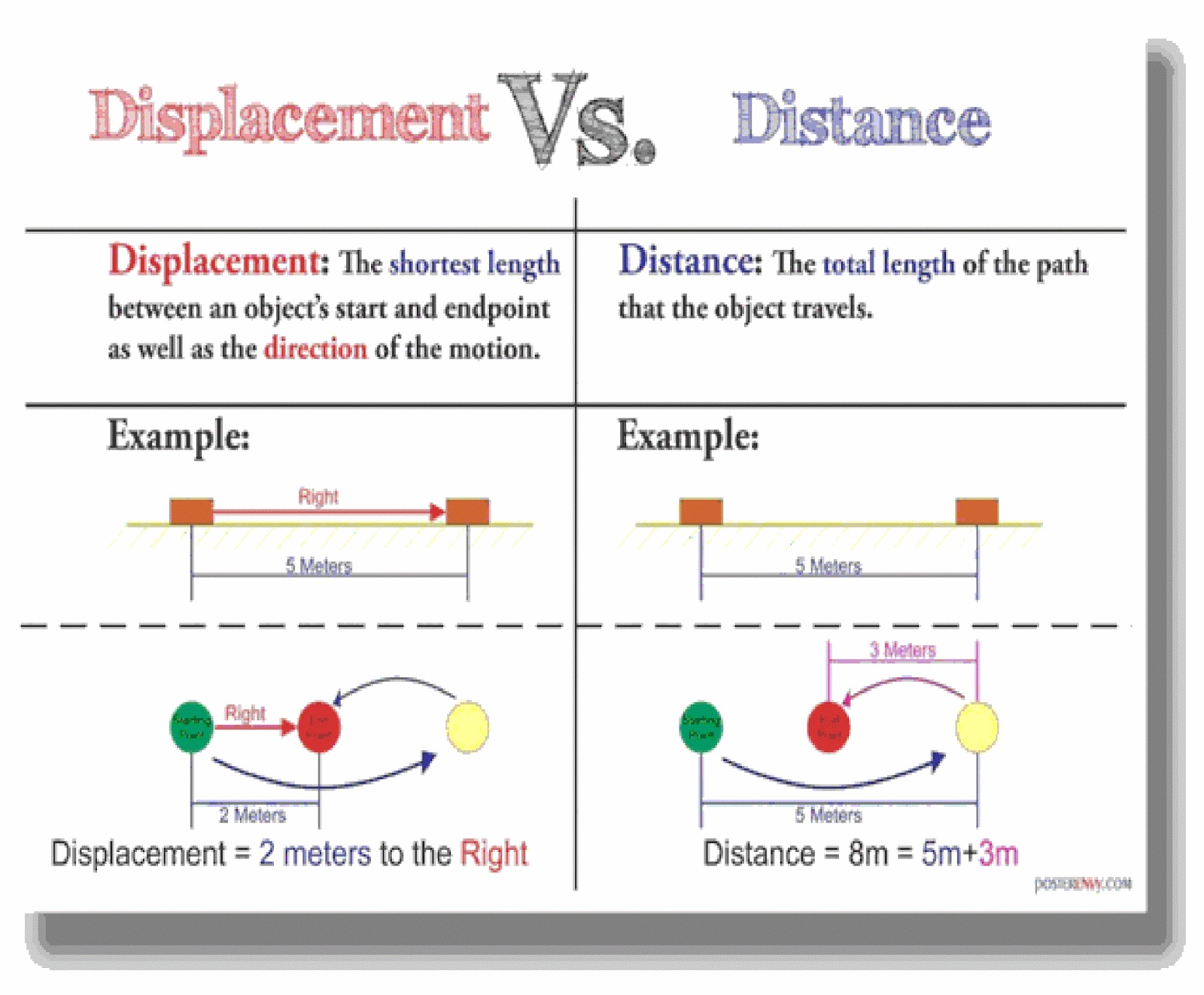

Hence from the diagram above, ∆x = √2 x radius = 15 √2 m. The displacement is calculated as the length of the shortest straight-line path between the start and the end points. Let us take the example of a jogger on a jogging track.Įxamples of Displacement: Biker on horizontal loop Image Source: Self Image In this situation, movement in the east direction is considered a positive movement, just like movement in the right in the above examples. Hence the displacement covered the candle is ∆x = 2.5 m – 1.0 m = – 1.5 m. Suppose a candle is moved move from 1.0 m on the table to 2.5 m in the east direction. Let us imitate the above example by moving a candle from one side to another side of a table. This signifies displacement of an enormous icon moving over a distance of 1,033.81 km due east along the 48th parallel of latitude. Let’s say we rented one of those massive helicopters and attached it to the Eiffel Tower in order to transport it to Vienna, Austria. Motion in the direction parallel to the latitude of the Earth can also signify displacement. The negative sign denotes that the person has traveled in the negative direction of the coordinate system. If a passenger starts from 5.0 m, travels to the rear end of the plane, and stops at 2.0 m, then the displacement equals ∆x = 2.0 m – 5.0 m = – 3.0 m. The positive sign signifies motion in the right direction of the coordinate system, whereas the negative sign denotes motion in the left direction.Įxamples of Displacement: Passenger walking in airplane Image Source: Openstax College Physics Then the displacement covered is ∆x = 3.2 m – 1.2 m = + 2.0 m. Let us consider that the teacher starts from 1.2 m as the initial point and stops at 3.2 m on the right. This is because the displacement is calculated as only the shortest path length from the start to the end point. If a teacher paces back and forth across the blackboard multiple times, they tend to cover a more considerable distance than the actual magnitude of the displacement. Let us look at some common yet diverse examples of displacement to understand this concept better. The unit of displacement is meters in the SI unit system. Because displacement is a vector, it accounts for both the magnitude and direction of motion in a straight line between the start and end points of a trajectory. The shortest distance between two points is the length of the displacement vector. Displacement is a vector of distance and direction in geometry and mechanics.


 0 kommentar(er)
0 kommentar(er)
